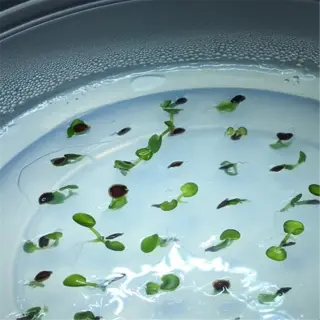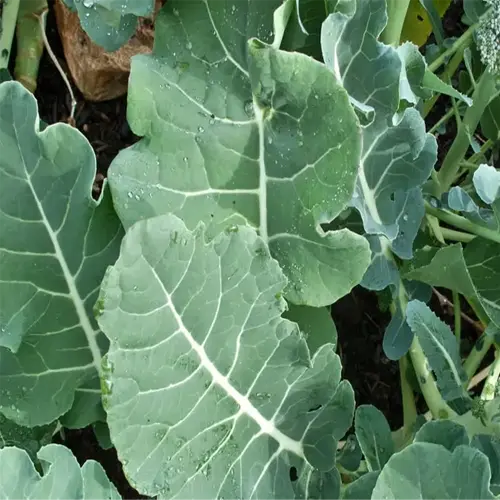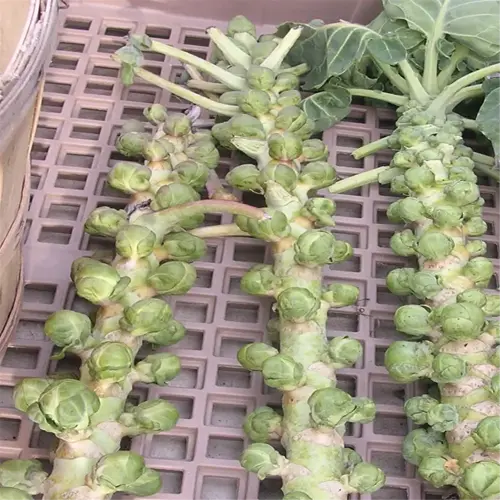How to Grow Cashews: Expert Tips for Home Cultivation

Written by
Michael Sullivan
Reviewed by
Prof. Martin Thorne, Ph.D.Growing cashews: plant in sandy soil and tropical climate
Use fresh seeds, a deep container is required for the tap root
Stake young trees and water weekly to ensure growth
Roasting the nuts at 410°F neutralizes toxic shell oils
If fertilizer can be applied, use one with zinc to maximise nut yield when the trees are flowering
Store the shelled cashews in an airtight, cool environment to increase shelf life
Article Navigation
Understanding how to cultivate cashews begins with acknowledging that botanically, they are classified as Anacardium occidentale, a tree that produces edible nuts and apples. These tropical plants love to be outside in warm climates, but they can adjust to being in a container in cooler climates. You will want to start with fresh seeds (make sure they do not have cracked shells), and be prepared to wait. Patience is mandatory, learning to grow your cashews takes time.
Cashews can thrive in many geographic regions because of their global adaptability. In areas subject to frost, movable pots are a great option, plus winter protection such as frost cloths, could stave off damage from frost. The cashew is toxic due to the presence of cashew oil in the raw shells, so caution should be exercised, and gloves should be worn. Planting cashews in sandy soil with zinc-rich fertilizers will significantly enhance growth. Their tap root is very deep, so be careful and choose your containers wisely.
I have lost saplings due to an unexpected cold snap. I now plant greenhouse starters for non-tropical flora. Beginners often forget drainage, and mix in coarse sand to the original soil. Once established, cashews will forgive growing neglect, but care early on makes the difference. Start with small containers first. Celebrate your first blooms like I did in year three.
Step-by-Step Planting & Care
Learning how to grow cashews begins with safety. Unprocessed seeds have urushiol, a toxic irritant that causes skin irritation. It is recommended to wear nitrile gloves while handling raw seed kernels. To soften the harder outer covering, soak them overnight. The dwarf varieties, which are similar to Anacardium occidentale ‘Nanum', are appropriate for limited spaces, while the standard cashew trees should be given at least 15 feet of clearance. Both produce the same nut.
Soil determines success. Add 60% coarse sand mixed with 30% compost to help with drainage. I lost three saplings to clay-heavy dirt before figuring this out. Roots like to rot in suspended moisture. If your native soil holds water like a sponge, just add perlite.
Young trees need to be watered every week using 1 gallon (3.8L) per young tree. While mature cashews will survive drought, the watering must be deep once a month. Apply zinc sulfate each spring; yellowing leaves mean a deficiency. My first harvest doubled with the zinc when I added it to some potted trees neglected outside.
Prune strategically. Removing crossed branches will help eliminate disease entry points. Container-grown dwarfs typically require little shaping. A client had an aphid infestation that taught me to spray neem oil every 14 days during wet seasons. Prevention is better than a salvage operation with these long-lived trees.

Seed Viability Test
- Fact: Fresh seeds sink; hollow/rotten seeds float in water tests
- Fact: Viable cashew seeds have intact shells without cracks or mold
- Fact: Test 10+ seeds to ensure batch reliability before planting
- Fact: Discard seeds older than 6 months for optimal germination rates
- Fact: Store tested seeds in dry vermiculite at 50°F (10°C)
- Fact: Pre-soaking increases germination speed by 30-40% in trials

Young Tree Protection
- Fact: Bamboo stakes prevent wind damage without piercing root systems
- Fact: Water 1 gallon (3.8L) weekly during first dry season
- Fact: Mulch 4-inch (10 cm) radius reduces weed competition by 60%
- Fact: Apply zinc sulfate at 0.5 oz (14g) per tree monthly
- Fact: Prune lower branches to improve air circulation and light exposure
- Fact: Frost cloths protect trees at 40°F (4°C) or below
Ideal Climate & Soil Needs
How to cultivate cashews is highly dependent on the accuracy of climate. The ranges for climate are tropical and tropical zones are most ideal. For example, the Kerala coast of India has the necessary climate of consistently growing temperatures of 77°F (25°C) or above year-round. Subtropical cases, such as in Florida, require frost blankets if the temperature falls below 50°F (10°C). In my experience, I have successfully nursed cashew trees through periods of cold with portable greenhouses, in the end, survival is not optional, it is a matter of seasons.
Soil pH ranging between 4.5-6.5 opens nutrient availability access. Acidic soils increase zinc absorption, an important mineral for nut development. If it is heavy clay, I mix in coarse sand approximately 12 inches (30 cm) deep. A client in Miami had a failed grove until we added sulfur to reduce the pH from 7.3 to 6.0 - the roots bounced back to life.The key is when the chemistry all works together.
Crossing between rooting and life all comes to drainage. For clay soils, I recommend building raised beds 2ft (60cm) high with a base of gravel. In the monsoon belt of India, farmers have found slope planting helps manage their runoff. My failed attempt in the backyard taught me: when it comes to the demise of a plant, waterlogged dirt kills more quickly than drought! Perlite is cheaper than regret.
Regional adaptations illustrate the versatility of cashews. The Floridians use drip irrigation to water their trees during dry winters. In Kerala, growers intercrop cashew trees with bananas to provide shade for yields. Both practices are regional adaptations that improve yield performance. Your location is not a limitation but a variable. You need to test the soil annually before you adapt or replant everything. This is the mantra for cashew growers.
Tropical Zones
- Monsoon Management: Plant on slopes for drainage during heavy rains. Use raised beds to prevent waterlogging.
- Shade Tactics: Use banana plants as temporary sun shields for saplings during peak summer months.
- Windbreaks: Plant coconut palms 15-20 ft (4.5-6 m) apart to reduce storm damage to cashew trees.
- Mulching: Apply 3-4 inches (7.5-10 cm) of rice husks to retain moisture in dry spells.
Subtropical Zones
- Winter Protection: Wrap trunks with burlap below 50°F (10°C). Use thermal blankets for young trees.
- Irrigation: Drip systems for dry winters (1.5 gal/5.7L per tree weekly). Schedule morning watering.
- Pollination Boost: Introduce honeybee hives during flowering. Avoid pesticides for 3 weeks post-bloom.
- Frost Cloths: Cover trees for 4-6 hours nightly when temperatures drop below 45°F (7°C).
Temperate Zones
- Greenhouse Essentials: Maintain 70°F (21°C) with humidifiers. Ventilate during midday to reduce mold.
- Container Depth: 24-inch (60 cm) pots for taproot development. Use wheels for mobility in winter.
- Artificial Lighting: 12hr/day LED grow lights in winter. Use full-spectrum bulbs for fruiting stages.
- Soil Heating: Install heating mats under pots to maintain 65°F (18°C) root zone temperatures.
Watering, Feeding, & Container Care
Young cashew trees thrive on routine, so during the drought, water each tree with 1 gallon (3.8L) of water weekly. The mature cashew tree can tolerate dry periods but will always respond positively to deep soakings every month. I lost my first cashew sapling after watering it like a mango tree. Cashew trees have their own water needs.
Zinc sulfate transforms potential for flowering. Apply 2oz (57g) per tree when the tree is budding - my orchard's yield doubled when I started to use this. Synthetic 6 - 6 - 6 is for quick spurting growth and compost tea is for building on the soil as it is healthy. Combine the best of both worlds for ground plants and container plants.
Root health rests on drainage. For pots, and especially at the start of the season, put down a 2in (5cm) layer of broken terracotta shards under a 60% sand soil mix. I learned this the hard way after a root-bound disaster at a client's house - if the roots are coiled, they are ready to be repotted. Try to check your containers at least twice a year.
Products derived from organic matter, such as worm castings, are effective at keeping salt in containers from accumulating. Synthetic fertilizers like ammonium nitrate quickly restore trees when they need nutrients immediately - it is very impressive how quickly yellow-leafed specimens return to a green color. For fertilizer types, matching the situation helps; that is, slow nourishment versus rapid fixes, which is important when you need to fix something due to an emergency. Your cashews will appreciate the effort through kernels.
Pot Size & Material
- Minimum Depth: 24in (60cm) for taproot development
- Material: Terracotta for breathability; plastic for lightweight mobility
- Drainage: 3+ 0.5in (1.3cm) holes + gravel layer at base
- Winter Prep: Wrap pots with bubble wrap below 50°F (10°C)
Soil Mix Formula
- Base: 60% coarse sand + 30% compost
- Aeration: 10% perlite/pumice for root oxygenation
- pH Balance: Add 1 cup (240g) sulfur per 5gal (19L) soil if >7.0
- Nutrient Boost: Mix 1 cup (240g) bone meal at repotting
Overwintering Indoors
- Lighting: 12hr/day full-spectrum LED grow lights at 12in (30cm) height
- Humidity: 50-60% with pebble trays or humidifiers
- Water Reduction: Cut irrigation by 50% in dormant phase
- Ventilation: Run fans 2hr/day to prevent mold
Growth Stages & Harvesting
Knowing how to grow cashews simply means learning about their growth cycle. Flowers will be formed in the winter time and from the flower, it will take about 50-60 days for nuts to form. In tropical India, the process is fairly spaced by monsoon rains. The cashew trees I cultivated in Florida were much slower and took 75 days roughly from the time of bloom to harvest. Cooler nights also increase this growth cycle. Be even more observant and never anticipate or rush what you see.
Harvest apples and nuts differently. You'll want to twist ruby-red apples very gently, they bruise more easily than peaches. Nuts are different: they'll come off with the gray shell, but you'll have to be careful. I learned the hard way, having raw sap ooze all over an arm, and mine blistered. Apples are best to process into jam and put up within three hours. But nuts require some time to detoxify first.
Signs of ripeness change with latitude. In humid regions, an aromatic apple scent indicates ripeness (think mango-pineapple scent). In arid regions, look for slight separation of nut shells. My Ghanaian mentor recommended testing the sweetness of an apple every day, and once I detect slight sweetness, I know things are ready. In the case of nuts, the indication is the empty rattle of the hollowed nut shells.
Detoxify nuts like a pro. Roast at 410°F (210°C) for 15 minutes. If it's smokin' you're neutralizing urushiol toxins. Freezing at -4°F (-20°C) for 48 hours will crack the shells safely. I tended to burn my batches by not timing them. Being patient will preserve the kernels more than not waiting.
Timing & Indicators
- Nut Maturity: Shells turn from green to dull gray
- Apple Ripeness: Bright red/yellow color + slight softness
- Weather Window: Harvest mornings after dew evaporates
- Tool Prep: Sanitize gloves/tools with 70% alcohol
Apple Handling
- Twist Technique: Rotate apples 180° to detach without tearing
- Storage Temp: 45-50°F (7-10°C) for 48hr max
- Transport: Use ventilated crates to prevent bruising
- Processing: Juice within 6hr to avoid fermentation
Nut Processing
- Detox Protocol: Roast at 410°F (210°C) for 15min minimum
- Shelling: Use vise grips after cooling to -4°F (-20°C)
- Grading: Sort kernels by size (Jumbo >180/kg, Medium 240/kg)
- Storage: Vacuum-seal with oxygen absorbers for 2+ years
Safe Processing & Storage
Raw cashew shells contain a chemical called urushiol, which is the same toxin poison ivy produces. Direct contact with a raw cashew shell could produce a blistering rash if you touch it with no protective gear. I discovered urushiol's effects on my hands and fingers early in my career; they became swollen. Now, I have taken to wearing nitrile gloves and ANSI-rated goggles when processing raw cashew shells. A single slip could set off the rash or reaction for weeks.
Use heat or cold to detoxify. Roasting at 410° F (210 °C) neutralizes toxins in 15 minutes, smoke is a positive sign. Freezing below -4° F (-20° C) for 48 hours breaks apart shells safely. During my visit to Vietnam, locals seem to prefer roasting for quickness. In the north, however, growers often freeze their crops to preserve flavor.
Store shelled nuts in glass jars with airtight lids and silica packs. They'll last for up to six months at room temperature. For long-term storage, vacuum seal and freeze, and the kernels will remain crisp for at least two years. I learned the hard way that a 1% moisture issue will ruin your 100% effort after I received a moldy batch from a client. Never underestimate the power of humidity.
You should always wear an apron. Cashew oil has a permanent ability to stain fabric. I also keep a bottle of white vinegar nearby for any splashes that might happen, as it is both safe and neutralizes urushiol faster than soap. A safety kit should include three items: disposable gloves, safety goggles, and respect for the hidden bite in the shell. Blisters are borne of complacency.
Detox Steps
- Ventilation: Work outdoors or with industrial exhaust fans
- Protective Gear: Nitrile gloves + ANSI Z87.1 goggles + apron
- Disposal: Soak shells in lime solution before landfill disposal
- Emergency Wash: Keep vinegar/water mix nearby for skin contact
Storage Solutions
- Short-Term: Airtight containers at 68°F (20°C) for 6 months
- Long-Term: Freeze at -4°F (-20°C) in moisture-proof bags (2+ years)
- Commercial: Nitrogen-flushed packaging for retail distribution
- Contamination: Store separately from peanuts/allergens
Packaging Standards
- Vacuum Sealing: Use 5mil bags with 99% oxygen removal
- Material: Food-grade polyethylene or Mylar for longevity
- Moisture Control: Include silica gel packs (2g per 1lb/450g nuts)
- Light Protection: Use opaque containers to prevent rancidity
Labeling Protocols
- Allergen Warning: Bold 'Contains Tree Nuts' on front panel
- Batch Coding: Laser-print harvest date + facility ID
- Storage Instructions: 'Keep refrigerated below 50°F (10°C)'
- Certifications: Include USDA Organic/Fair Trade logos if applicable
Contamination Prevention
- Workspace Zones: Separate raw/cooked areas with color-coded tools
- Sanitation: Sanitize surfaces with 200ppm chlorine solution hourly
- Air Quality: HEPA filters to reduce airborne particulates
- Training: Monthly safety workshops for staff
5 Common Myths
Cashew apples are toxic, so never eat them.
Cashew apples are edible, high in vitamin C - but they spoil quickly (24 hours), which makes it challenging to sell commercially. The toxic oil anacardic acid is only present in the shell, not in the apple.
They can be eaten directly from the tree.
Raw cashews have urushiol in the shells - a toxic liquid that could cause a severe dermatitis. The shell has to be roasted at 410°F (210C) for more than 15 minutes, or it has to be frozen below -4°F (-20C) to neutralize the toxin before they can be eaten.
Dwarf cashew trees produce nuts of inferior quality compared with standard types.
Dwarf cultivars, such as Anacardium occidentale 'Nanum', produce identical nut quality to standard trees. Their smaller stature (6-10ft/1.8-3m) - may actually help with pest management, as well as for harvesting nuts in home gardens.
Cashew trees can be cultivated indoors without any special equipment.
Indoor cultivation requires at least twelve hours of full-spectrum LED (400-700nm) light each day, a minimum relative humidity of 60-80% with the use of humidifiers, and importantly, I recommend rotating the tree each day to allow for even growth. Most home environments do not have natural light intensity (2000+ lumens/sq ft).
Cashew shells can be composted safely in home gardens.
Shells contain persistent toxins requiring 18+ months of industrial composting at 160°F (71C). For home disposal, soak shells in lime solution (1lb/0.45kg lime per 5gal/19L water) for 72 hours before burying.
Conclusion
Understanding how to grow cashews demonstrates their extraordinary adaptability. They grow best in tropical climates, such as along the coasts of India; even regions with subtropical climates may be able to grow cashews if you frost-protect them. I've been able to use heated greenhouses to protect my plants in the Texas winters. Dwarf variety cashew trees can be grown in both, producing full-sized nuts without sprawling roots. Much of the appeal of a cashew is its versatility and use in tropical/subtropical climates.
Do not ever compromise on safety! I suffered from chemical burns from shell oil in my earliest forays into the kitchen, and now I will tell you that nitrile gloves, an ANSI-approved set of goggles, and nitrile gloves, should be on your list of non-negotiables - no exceptions! The chemical structure of toxins breaks down if roasted at 410°F (210°C) or if it freezes below -4°F (-20°C). You want to eat your harvests, not be harmed by them!
For urban farmers, rejoice. One of our clients has three dwarf cashews on an 8ft balcony in 24in (60cm) pots. The essential ingredients: Checking the roots each month for awareness, soil that is heavy with sand, and sunlight oriented to the south. The first harvest was 4lbs, evidence that a lack of physical space can never stop your dreams of growing cashews. Begin with one pot, and when you feel confidence, add more.
Dwarf cultivars such as ‘Nanum' have dramatically changed the dynamics in my urban nursery. They bear their fruit earlier than standard varieties, 18 months as compared to three years. They produce the same nut size as a standard, only at half the height! I will soon be experimenting with grafted varieties on a reliable and durable rootstock. Failure teaches us more than success does. Your ideal cashew tree is waiting for you, through trials, soil, and sun!
External Sources
Frequently Asked Questions
Can cashews be grown at home in non-tropical regions?
Cashews thrive in tropical climates but can be grown in containers in cooler zones with proper care. Use dwarf varieties, maintain temperatures above 50°F (10°C), and provide full sun. Winter protection like greenhouses or grow lights is essential for survival.
How long does it take for a cashew tree to produce nuts?
Cashew trees typically bear fruit 3-5 years after planting. Growth speed depends on soil quality, climate, and care. Regular watering, zinc-rich fertilizers, and frost protection accelerate maturity. Container-grown dwarf varieties may fruit slightly faster than standard trees.
Are raw cashews safe to eat directly from the tree?
Raw cashews contain toxic urushiol in their shells, which causes skin irritation. Safe consumption requires roasting at 410°F (210°C) for 15+ minutes or freezing below -4°F (-20°C) to neutralize toxins before shelling.
What type of soil is best for cashew cultivation?
Cashews require well-draining sandy soil with a pH of 4.5-6.5. Amend heavy clay soils with coarse sand and compost. Avoid waterlogged conditions, as root rot can kill the plant. Container mixes should include 60% sand and 30% organic matter.
Why aren't cashew apples sold in grocery stores?
Cashew apples spoil within 24 hours of harvest due to high moisture content. They're rarely exported and are usually processed locally into juices or jams. The delicate skin also makes them prone to bruising during transport.
Can cashew trees survive frost or cold temperatures?
Cashew trees die at temperatures below 50°F (10°C). In frost-prone areas, grow them in movable containers and bring indoors during winter. Use frost cloths and mulch for temporary cold snaps in subtropical zones.
How much space do cashew trees need to grow?
Standard trees require 10-15ft (3-4.5m) spacing between plants. Dwarf varieties need 6-8ft (1.8-2.4m). Container-grown trees should be in pots at least 24in (60cm) deep to accommodate their taproot system.
What fertilizers boost cashew tree growth and nut production?
Use balanced fertilizers with:
- Zinc for flowering and disease resistance
- Phosphorus for root development
- Nitrogen for leaf growth
- Potassium for drought tolerance
Why are cashews never sold in their shells?
Cashew shells contain caustic oil that causes burns. Commercial processors remove shells using specialized roasting equipment. Home growers should never attempt shelling without protective gear and proper toxin-neutralization methods.
Do cashew trees require pruning?
Prune annually after harvest to remove dead wood and improve airflow. Trim lower branches to simplify nut collection. Avoid heavy pruning, never remove more than 25% of foliage, as it reduces next season's yield.

